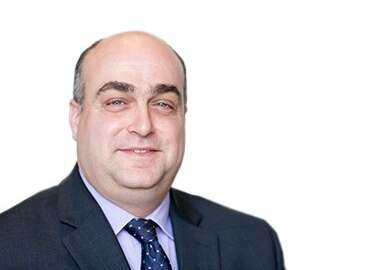Best listening experience is on Chrome, Firefox or Safari. Subscribe to Federal Drive’s daily audio interviews on Apple Podcasts or PodcastOne.
As he prepares to sign the nation’s 10 millionth patent, Andrei Iancu, director of the U.S. Patent and Trademark Office, is also looking at ways to improve his workforce’s efficiency and decrease the patent backlog. Improved training, new technology tools and clarified processes will all play a role in that effort.
“Obviously, there is a relationship between the backlog and quality,” Iancu told the Federal Drive with Tom Temin. “Obviously, we can prosecute that much faster if we completely ignore quality. Nobody wants that. Or we can take forever, and dramatically increase pendency. It’s a balance, we’re carefully balancing. We want to increase the quality of examination, and at the same time decrease pendency.”
Iancu said his metric for patent quality is one that can stand the test of time, and withstand challenges that may arise down the road.
USPTO’s current patent backlog stands at about 540,000. Iancu said USPTO processes more than 600,000 patent applications, and actually issues upwards of 300,000 patents, each year. He noted that the rate of patent applications has increased: It took 75 years to issue the first million patents. The last million patents took only three years to issue.
One of the ways USPTO is looking at speeding up this process is getting patent examiners directly involved with applicants as early as possible. Early and ongoing communication can help to improve the quality of the patent applications that examiners are dealing with.
“If we have an early-stage interview where the examiner and the applicant can speak to each other, try to get on the same page, we think that could help in that regard, so we’re exploring that,” Iancu said. “There’s a cost-benefit analysis as well. And there are potential tweaks that we’re looking at with regard to that program as well.”
Improved training can also play a role in helping patent examiners reduce the backlog by working more efficiently. Patent law is a complex area of legal work, patent applications often involve complex technologies, and neither area is going to get simpler any time soon.
That’s why USPTO is looking to supplement its internal training by partnering with outside technology groups that have areas of expertise relevant to USPTO’s groups. Because the patent examination process requires a significant amount of human judgement, there’s not much room for automation. That means the best way to improve the efficiency of the process is to improve the understanding of the examiners.
“The more training that we do, and the closer the training is to the area of expertise of a particular examiner, the better it is in terms of increasing the examiner’s substantive knowledge as well as efficiency,” Iancu said.
That said, “not much room” for automation is not the same thing as “no room” for automation. One way technology can help improve the process is by facilitating the search process for examiners. A large part of the job, Iancu said, is searching for prior art. But the amount of publications, and therefore the amount of art, is continuously expanding, as does accessibility.
“Therefore, the overall ‘haystack,’ shall we say, of art keeps growing, and we still need to look for the relevant needles in this forever-growing haystack,” he said.
Iancu thinks there might be an opening here for some big data solutions, possibly even AI, to ease this process for examiners by assisting their searches.
Meanwhile, a much more familiar technology solution is helping USPTO grow its workforce.
“Through the telework program, we have managed to expand our operations in almost all the United States,” Iancu said. “We are able to diversify our employee pool.”
USPTO was an early adopter of telework, and has long been heralded as an example of how the rest of the federal government could benefit from the program if it was implemented successfully, although the program has had a few stumbles.
Iancu said telework has allowed USPTO to reach and hire more talented, qualified individuals across the country, while also gaining access to localized communities of inventors.
Finally, Iancu said USPTO is looking at releasing guidance to clarify certain difficult-to-navigate sections of the patent code, particularly related to the America Invents Act of 2011. USPTO issued one memorandum last month, and has plans to issue more guidance on issues like what subject matter is eligible for patents, and certain post-grant review proceedings. Iancu said USPTO just needs to clear up some confusion around the edges of these topics.
Copyright
© 2024 Federal News Network. All rights reserved. This website is not intended for users located within the European Economic Area.
